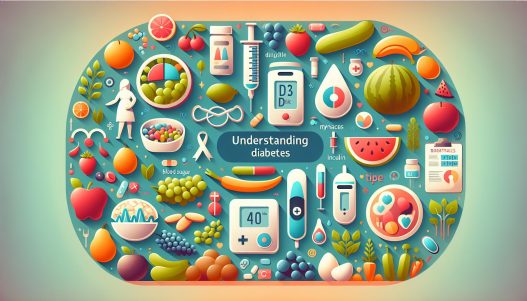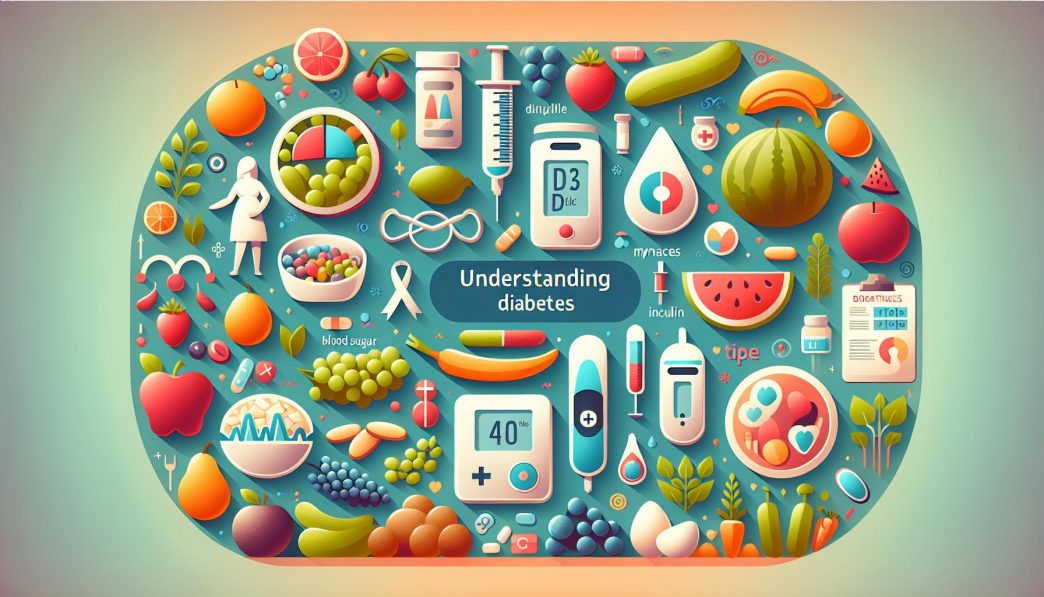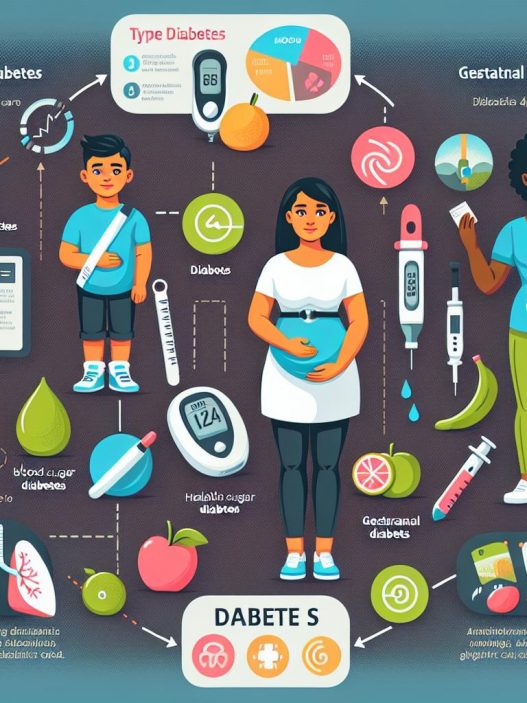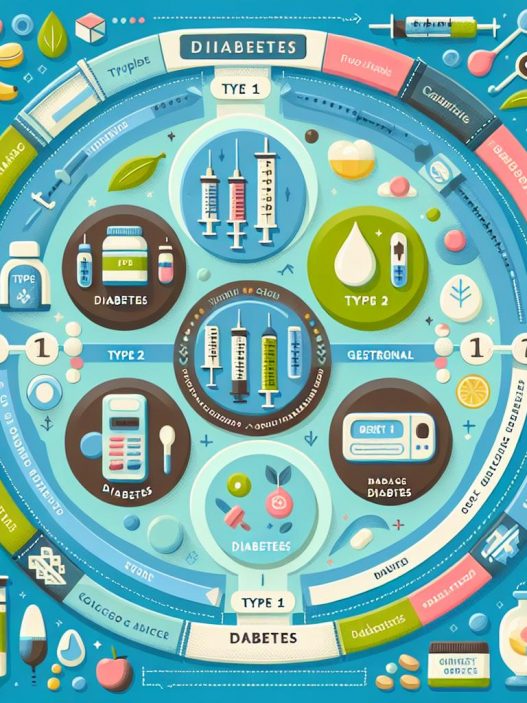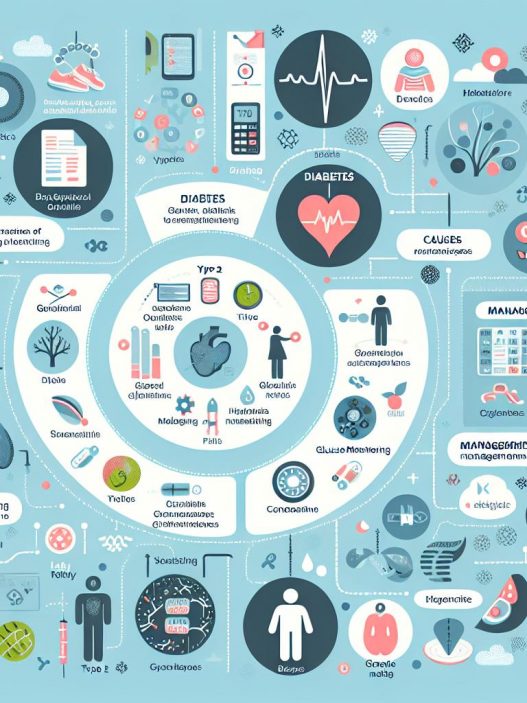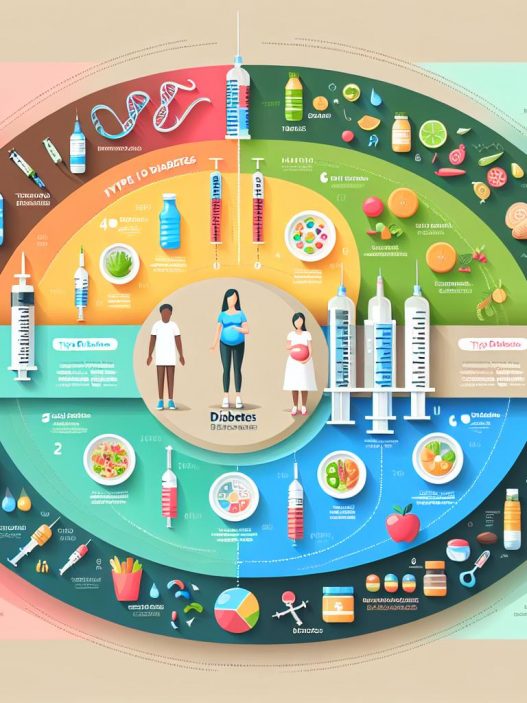# Understanding Diabetes: Navigating the Spectrum from Type 1 to Type 2 and Gestational Diabetes
Diabetes is a chronic condition that affects millions of people worldwide, characterized by high blood sugar levels resulting from issues with insulin production or function. This blog aims to provide a comprehensive overview of diabetes, focusing on the different types, including Type 1, Type 2, and gestational diabetes. By understanding these nuances, individuals can better manage their health and make informed decisions.
Understanding the Diabetes Spectrum: An Overview
Diabetes is not a one-size-fits-all condition; rather, it exists on a spectrum that encompasses several types. Each type is unique in its causes, symptoms, and management strategies. Type 1 diabetes typically arises during childhood or adolescence and results from the pancreas producing little to no insulin. Conversely, Type 2 diabetes is more prevalent and generally develops in adulthood due to insulin resistance or insufficient insulin production.
Gestational diabetes adds another layer to the spectrum, occurring during pregnancy and typically resolving after childbirth. Recognizing these distinctions is crucial for effective diagnosis and treatment. Awareness can also facilitate better health outcomes, reducing the risk of complications associated with unmanaged diabetes, such as cardiovascular diseases and nerve damage.
When discussing diabetes, it’s essential to consider the risk factors and symptoms associated with each type. For instance, while Type 1 diabetes is often linked to genetics and autoimmune disorders, Type 2 diabetes is frequently associated with lifestyle factors, including obesity, sedentary behavior, and poor dietary choices. Understanding these risk factors can empower individuals to make necessary lifestyle changes to reduce their likelihood of developing diabetes.
The Causes and Mechanisms of Type 1 Diabetes
Type 1 diabetes, often diagnosed in children and young adults, occurs when the body’s immune system mistakenly attacks and destroys insulin-producing beta cells in the pancreas. This autoimmune response results in little to no insulin, causing glucose levels in the blood to rise. Although the exact cause remains unclear, factors such as genetic predisposition, environmental triggers, and viral infections may contribute.
Once diagnosed, managing Type 1 diabetes involves a lifelong commitment to monitoring blood glucose levels, administering insulin, and maintaining a balanced diet. Patients are also encouraged to engage in regular physical activity and learn to recognize the signs of hyperglycemia (high blood sugar) and hypoglycemia (low blood sugar). Education and continuous care are designed to help individuals navigate their daily routines without compromising their health.
The emotional impact of a Type 1 diabetes diagnosis is often profound. Patients may experience anxiety regarding their health, social interactions, and the adjustments needed to manage their condition. Support from healthcare professionals and diabetes education programs can make a significant difference, offering the knowledge and confidence needed to thrive despite living with a chronic illness.
The Rising Epidemic of Type 2 Diabetes
Type 2 diabetes has become increasingly common in recent decades, reflecting changes in lifestyle and dietary patterns. Unlike Type 1 diabetes, Type 2 is often preventable and is closely tied to obesity, inactivity, and poor nutrition. In patients with Type 2 diabetes, the body’s cells become resistant to insulin, leading to elevated blood glucose levels.
The symptoms of Type 2 diabetes can be subtle and sometimes go unnoticed for long periods. Common symptoms include frequent urination, excessive thirst, increased hunger, fatigue, and blurred vision. Many individuals may be unaware that they have the condition until complications arise, such as heart disease or nerve damage.
Preventing Type 2 diabetes is a priority for public health. Education about maintaining a healthy weight, eating balanced meals rich in whole foods, and incorporating physical activity into daily routines can significantly reduce the risk. Regular screenings for those at heightened risk, such as individuals with a family history of diabetes or those who are overweight, are also crucial for early detection and intervention.
Gestational Diabetes: Understanding Risks During Pregnancy
Gestational diabetes occurs in some women during pregnancy, with rising hormone levels leading to insulin resistance. Typically, this condition is diagnosed during the second or third trimester and can have significant implications for both mother and baby. While gestational diabetes usually resolves after childbirth, it does increase the risk of developing Type 2 diabetes later in life for both the mother and the child.
Symptoms of gestational diabetes may mirror those of Type 2 diabetes, though they can often be more challenging to detect. Common signs include excessive thirst, frequent urination, and increased fatigue. Pregnant women are usually screened for gestational diabetes between 24 and 28 weeks of pregnancy, allowing for timely management and intervention if needed.
Management of gestational diabetes primarily involves dietary modifications and physical activity. In some cases, insulin therapy may be required to regulate blood sugar levels effectively. After childbirth, women are encouraged to engage in lifestyle changes that promote long-term health, reducing their risk of Type 2 diabetes and other associated conditions.
The Role of Nutrition and Lifestyle in Diabetes Management
A well-balanced diet plays a critical role in managing all types of diabetes. For individuals with Type 1 diabetes, careful carbohydrate counting helps balance insulin intake with food consumption. In contrast, those with Type 2 diabetes benefit from a focus on whole foods, including a variety of fruits, vegetables, whole grains, and lean proteins, which can help regulate blood sugar levels and promote overall health.
Physical activity is equally essential in managing diabetes. Regular exercise helps improve insulin sensitivity, lowers blood sugar levels, and reduces cardiovascular risks. Health authorities recommend at least 150 minutes of moderate-intensity aerobic activity per week, combined with strength training exercises on two or more days.
Stress management techniques, including mindfulness, yoga, and meditation, can also play a role in diabetes management. Chronic stress can lead to elevated blood sugar levels and worsen diabetes control. Therefore, incorporating stress reduction strategies into daily routines can significantly improve both physical and mental well-being for individuals managing diabetes.
Emerging Research and Future Directions in Diabetes Treatment
Recent advancements in diabetes research hold promise for revolutionary treatment options. Continuous glucose monitoring devices and insulin pumps have changed how people manage their diabetes, allowing for real-time glucose tracking and more precise insulin delivery. Moreover, advancements in artificial intelligence and machine learning are paving the way for personalized treatment protocols tailored to individual patient needs.
Promising therapeutic approaches, such as stem cell therapies and immunotherapies for Type 1 diabetes, are also under investigation. These strategies aim to restore insulin production or modulate the immune response to prevent further destruction of pancreatic beta cells. While still in the research stages, these innovations may offer hope for future diabetes management and even a potential cure.
The role of education and ongoing support cannot be understated. Empowering patients with the knowledge to manage their diabetes is crucial for effective care. Diabetes self-management education programs focus on providing comprehensive training and resources, enabling individuals to take control of their health and reduce the risk of complications.
In conclusion, understanding the spectrum of diabetes is critical for effective management and prevention. Recognizing the differences between Type 1, Type 2, and gestational diabetes allows individuals to make informed decisions about their health. With ongoing research and advances in technology, there is hope for improved treatment strategies and better outcomes for those living with diabetes. Through awareness, education, and lifestyle modifications, it’s possible to navigate the challenges of diabetes and lead a full, healthy life.










